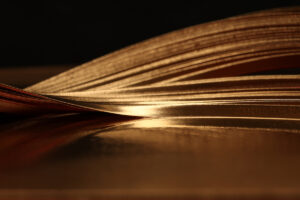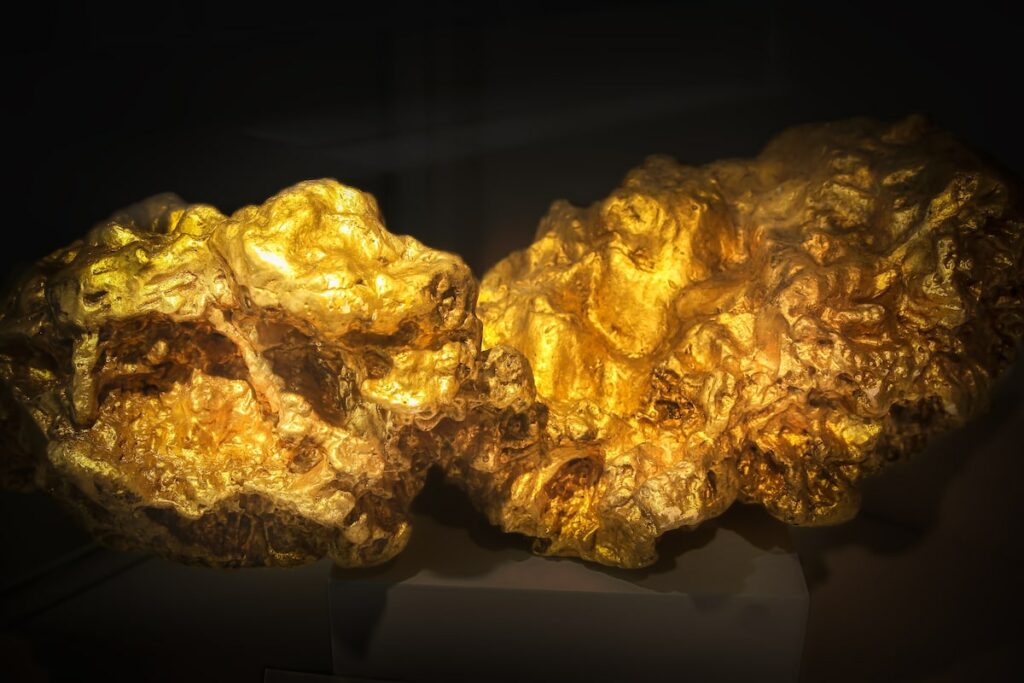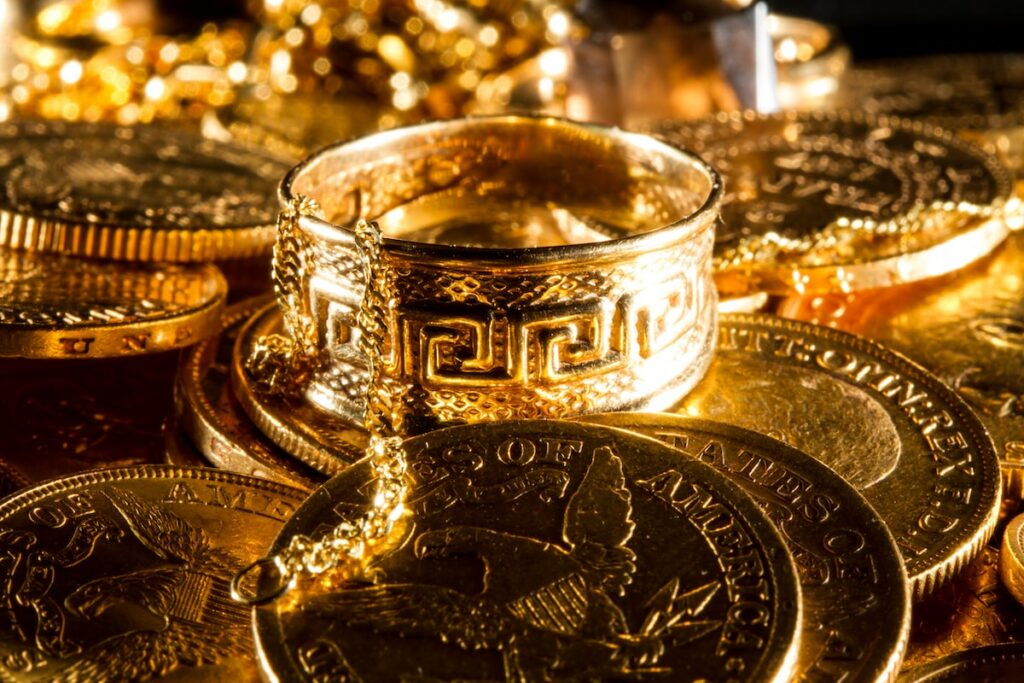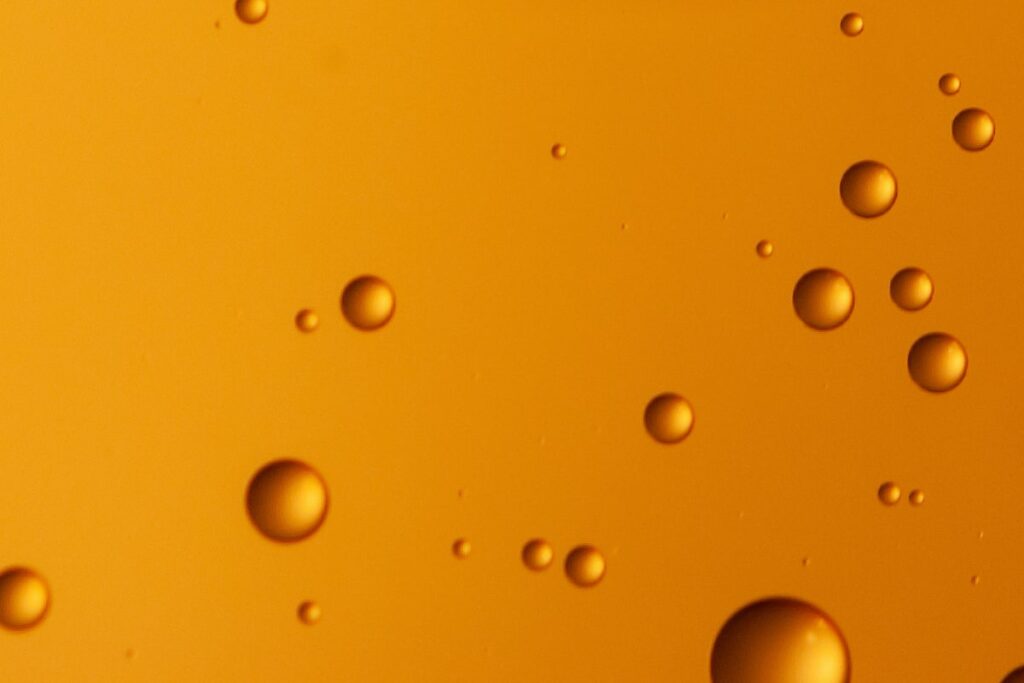Gold is a noble metal that is highly valued not only for its beauty but also for its many uses in various industries.
It comes in many shapes and forms, some that you may not even recognize.
Knowing this, you might wonder if gold can also be transparent.
Gold can become transparent if it is made thin enough. For gold to be transparent, it would have to be approximately 10 nanometers (0.0003 thousandths of an inch) thick, in which case it would be extremely fragile.
Below, we will discuss more about gold and its properties, including attributes that enable it to be stretched so thin that it can become transparent.
Can Gold Be See-Through?
Gold is a metal, so it might seem strange that a metallic substance can be see-through.
Gold can be see-through if it is thin enough. The thinnest gold you are likely to encounter is gold foil, which is made by pounding and stretching gold into extremely thin sheets.
Gold has to be incredibly thin for it to be see-through.
One application for see-through gold is for heating elements in aircraft windows: an extremely thin layer of gold is sandwiched between glass panels.
Thanks to its high conductivity and transparency, gold is useful as a means of preventing ice from accumulating and obscuring the pilot’s vision.
Gold foil is often used for decorative purposes in haute cuisine due to the fact that it is edible.
Gold can be so transparent it becomes a gas.
What Is Clear Gold?
There have been some erroneous claims that gold is clear in its purest form.
Claims of gold becoming clear at high levels of purity are puzzling to scientists who know that even extremely thin transparent sheets of gold can’t be considered clear.
Clear gold is a rumored type of gold that is said to be completely transparent. Clear gold does not exist. Claims that gold can become clear are likely formed through a misconception of the fact that extremely thin gold can be see-through.
In the Bible, in the book of Revelations, there is a passage that refers to “pure gold, like transparent glass,” which is the subject of debate among theologians.
This passage may have created an impression among laypeople that pure gold is indeed transparent, even though it is likely the result of an inadequate translation from the original Greek scriptures.
How Is Gold So Thin?
Gold can be made so thin that you would be able to see through it, but it becomes extremely fragile even before you get it thin enough to be transparent.
Gold is the most malleable metal, meaning it can be hammered and shaped without cracking.
Gold is made into a thin foil by using special methods of beating it to flatten it. Kanazawa gold leaf, a gold foil produced in Japan, is made by placing gold between sheets of paper and using machinery to pound the gold into thinner and thinner pieces.
Gold foil and leaf are used for various decorative and scientific purposes.
A single ounce (28 grams) of gold can be used to make up to 100 square feet (9 square meters) of gold foil.
It could also be drawn out into a wire measuring 50 miles (80 kilometers) long — that’s more than three times the length of Manhattan Island!
Another way gold can be made really thin is by using a process referred to as plating.
Gold plating employs a chemical process to create a thin layer of gold on other metals.
Gold plating is commonly used to make affordable jewelry that has the luxurious appearance of gold.
It’s also sometimes used to produce counterfeit goods that appear to be gold, with the intent of misleading an unwitting buyer into paying far more than the goods are worth.
Thankfully, there are several methods of testing gold so you can verify the authenticity and avoid buying a counterfeit piece.
One method commonly used by pawn shop owners is to heat the gold up using a Zippo lighter — gold will brighten if exposed to heat, unlike other metals that will darken.
What Color Is Gold In Its Purest Form?
When people discuss gold, they often treat it as if it were its own color.
However, gold is not something that can be identified on the spectrum of colors — the three primary colors being red, yellow, and blue.
In its purest form, gold is reddish yellow in color, that is, a slightly orange shade of yellow. Gold in RGB colors is expressed by the hex code #FFD700, which is primarily red with a large dose of green, with blue being completely absent.
Gold can take on a variety of colors when alloyed with different metals.
Gold bullion is naturally of high purity, but when it comes to jewelry, gold is typically alloyed due to the metal’s innate softness.
As explained, gold is often alloyed with other types of metal to give it extra strength because it is very soft when it’s pure.
Alloying can change gold’s appearance and give it a different color — popular examples are white gold and rose gold.
Often confused with platinum, white gold is an alloy of gold and other metals, specifically zinc or nickel, that make it look silver in color.
This is desirable for people who prefer the aesthetic of silver but want the luxury of gold.
White gold is usually available in 14 and 18 carats, which are alloys of 58.3% and 75% gold, respectively.
24-carat gold is pure and will have the metal’s trademark yellow-orange color. It’s impossible for gold to be white without alloying it.
Another desirable type of gold is rose gold. As the name implies, it has a pinkish hue. Rose gold is made from a combination of gold and copper. It also sometimes contains silver.
It might seem strange that gold can be transparent, but the trick behind this is getting the gold thin enough that light can shine through.
Even then, you cannot describe it as “clear,” but you would be able to see through it.
Check out the other guides on our site for more:
- How Can You Test Gold at Home?
- How to Avoid Gold & Silver Scams
- How to Know if Gold is Fake?
- Why Stack Gold & Silver?
- Can You Take Gold on a Plane?
- Can Gold Be Destroyed?
- Can Gold Become a Gas or Liquid?
- Can You Get Gold Wet?
Sources
Usgs.gov, White Gold




